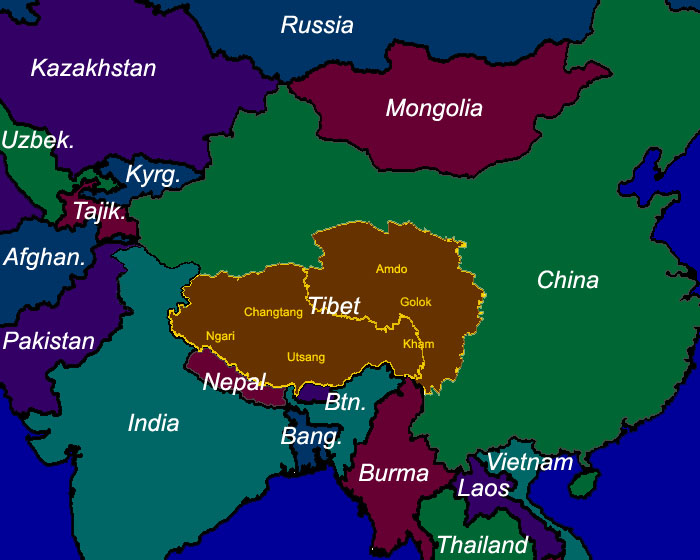During the recent Indo-China border conflict, Tibet’s name is coming up again and again. If China had not annexed Tibet, we would be living with a peaceful neighbor. Not surprisingly, there is a ‘Tibetan government in Exile’ based in McLeod Ganj, India, the home of the Dalai Lama.
With practically no control over Tibet, what is the purpose of Tibetan-government-in-exile or many other instances of Government-in-exile (GiE). More than anything else, isn’t it keeping the idea alive that the status quo is not normal, and needs to be changed. Talking specifically about Tibet, the Dalai Lama is just keeping the idea alive that Chinese rule in Tibet is not acceptable, and needs to be replaced. In two generations, people might forget what happened in 1950 and Chinese rule in Tibet will be accepted and taken as normal. But with his movement, GiE being its symbol, the Dalai Lama is keeping it fresh in our memories that people of Tibet should be ruling Tibet, and when circumstances are favorable, it will happen.
The history of Jews in the last 2500 years is another example of how an idea survived and flourished. The exodus of Jews from Jerusalem started more than 2500 years back and they eventually got their homeland in 1948 with the establishment of the state of Israel. Their successive generations must have kept the idea alive, that Israel is their original homeland and they have to return there someday. If an idea is alive, you never know when it may become a movement, or the circumstances might make it a cakewalk, but if the concept itself is lost, it’s hard to revive any ideology. Jewish population was probably not more than five percent of total population of any area they migrated to, but they were never swept away by the majoritarian ideology, but rather stood firm on their doctrine. There are hardly any examples of huge flamboyant movements by Jews, just that most of them did not forget that Jerusalem is their homeland and passed on this information to their successive generations and when the time was ripe, they made it.
We tend to believe that a powerful and/or loudmouthed person is more likely to influence a large number of people with his opinion. But another way to look at this is that beliefs spread like viruses.
A person A may infect 40 people with his viral infection, who in turn may infect five persons each who in turn may infect ten persons each.
Another person B may infect one person only, who in turn may infect two persons only, but out of these two, one may eventually end up infecting a thousand people.
The person A will be called a super-spreader, but the ultimate impact of B is no less than A.
Taking a real life example, Joseph Stalin was all powerful and killed millions who did not seem to agree with him. He was even succeeded by his own type of people but his ideology did not survive even 50 years after his death.
The essence is that the chain must not break, if we think an idea is worth spreading. Our job is just to keep our intentions active, in whatever way we can.
You never know when your idea might turn into a pandemic.
Author: Arun Chaba
Disclaimer: The opinions expressed within this article are the personal opinions of the author. Jagrit Bharat is not responsible for the accuracy, completeness, suitability, or validity of any information in this article. All information is provided on an as-is basis. The information, facts or opinions appearing in the article do not reflect the views of Jagrit Bharat and Jagrit Bharat does not assume any responsibility or liability for the same.
Photo credit: International Tibet Network

